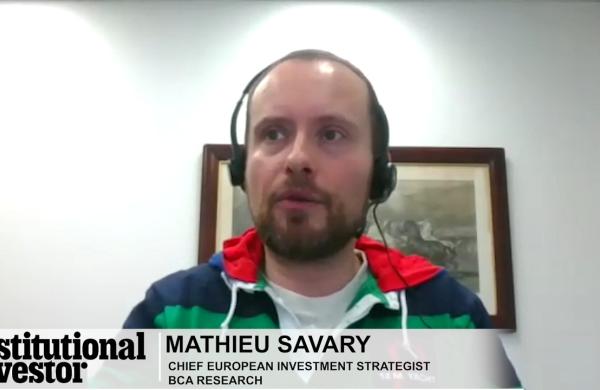Mounting evidence of a stronger economic recovery is diverting investor attention from the intractable crisis in Libya and the Middle East. On Friday, the Labor Department said that the economy added 192,000 jobs in February, and that the jobless rate slipped to 8.9 percent, the lowest reading since 2009. While the data doesn't create a completely clear picture—there were concerns about wage levels in February--it is generally pointing toward growth. Unemployment claims for the prior week unexpectedly fell to 368,000, the lowest level in nearly three years. Analysts had expected a gain of 7,000 claims .
The surprising strength of the report has raised anticipation about the monthly jobs data due on Friday, which some now think may help confirm the strength of Thursday’s data. The other encouraging news was a strong ISM services report, which showed that the services sector posted its highest gain in nearly six years.
With those signs of economic growth to consider, ECB President Jean Claude Trichet said the bank will exercise “strong vigilance” over inflation. While the bank left its key rate unchanged at 1 percent, the market now expects an increase in April. And that raises expectations that the Fed will raise U.S. rates, albeit much farther down the line.
“The Treasury curve is preparing for growth and beginning to discount Fed tightening at some point in the future,” Jonathan Lewis, principal with Samson Advisors, said on Thursday. He later added — in an interview — that “the market is now ahead of the curve.”
Investors have started to adjust their portfolios for a world of higher growth and more robust inflation. That is likely to mean somewhat higher rates — the three years note rose 8.5 basis points and the 10 year note rose 5 basis points, according to Lewis. “If there was any doubt growth was the dominant theme, buoyant U.S. equity markets are the exclamation point to this discussion,” he said. The Standard & Poor’s 500 rose 22.49 points, or 1.72 percent, to 1,330, and safe haven currencies such as the Swiss franc were relatively weak.
The February jobless report was roughly in line with the expectations of Josh Feinman, the global chief economist at DB Abvisors, the institutional asset management business of Deutsche Bank, who expected a gain of 200,000 to 250,000 jobs. “Finally, it looks like the labor market is getting better,” he says.
While investors are pricing in the expectation of higher rates, the change probably will be gradual. Feinman says he doesn’t expect the Fed to raise rates before next year, although he maintains the central bank may start to reverse its stimulus in the middle of 2011.
A stronger growth outlook means that the risk of deflation, which was regarded as serious just this summer, is declining. “The outlook for inflation has moved higher,” Feinman says. For now, higher oil prices are the driving factor. But he says it’s unlikely that those prices will be passed through the economy. While inflation is heading higher, he doesn’t expect it to be a “serious” problem for investors.
Gradual as it may be, the markets are shifting toward a new era in which the financial crisis, recession, bailouts and stimulus are in the past, and growth is in the future.






